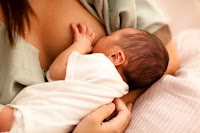HOW THE BODY IS FORMED
From the very moment when the father’s
sperm fuses with the mother’s egg to form a single-cell unit of life, that
cells has to divide and divide and divide to millions of times over to develop
into a form that can firmly connect itself to the uterine walls. This process
of cell division is call mitosis. By the
time its grows to a full – term baby, about a trillion cell division will have
taken place. For this to happen, the body has to demand more water from the
mother to supply the growing demand of the child. Even when the child is born,
the mother has to provide the water needs of the infant through her
milk-manufacturing system. The mother breast is both a sort of water fountain
for child and source of food. Inside the cell of the body, there should ideally
be 75 percent water while outside the cell or extra-cellular environment is
about 90 percent water.
The
role of water in the bodies of all living species, humans included, has not
changed since the earliest creation of life in water. From the very moment of
conception, when the father’s sperm fuses with the mother’s egg to form a
single –cell unit of life, that cell has to divide, and divide, and divided millions of
times over to develop into a form that can firmly connect itself to the uterine
wall. By the time its grows to be a full – term baby, about a trillion cell
divisions will have taken place. For this to happen, it has to impose a water
regulatory pattern for its need on the mother’s water-intake system. Each new
cell that forms has to be filled up mainly with water.
All of a sudden, the mother
has to take in more water to supply the growing demands of the child. Even when
the child is born, the mother has to provide the water needs of the infant
through her milk-manufacturing system. The mother’s breast is both a sort of
water fountain for her child and source of food.

No comments:
Post a Comment